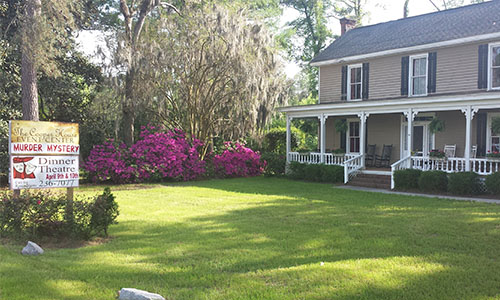
When most people think of Myrtle Beach, South Carolina, the first things that usually spring to mind are the white-sand beaches, the cool Atlantic Ocean waters, championship golf, and an endless list of attractions, shops, restaurants and nightlife. From the neon lights of the Myrtle Beach SkyWheel to the colorful fireworks over the ocean, Myrtle Beach is filled with thrills, and The Breakers Resort in the downtown oceanfront district puts you in the middle of the fun.
But there's another side to the Grand Strand that many overlook – a rich history and heritage that dates back to some of the earliest settlements in Colonial America. From the old rice plantations in the Lowcountry to historic homes close to the coast, the Myrtle Beach area offers some unique opportunities to take a timeout from your beach vacation and travel back in time. Here are some of the historic hot spots where you can experience a blast from the past during your visit:
Cooper House: This charming site isn't as old as some of the others in the area, but it played a key role in the development of Myrtle Beach and still entertains guests today. Built in the early 1900s, the Cooper House and the adjacent general store were home to the first postmaster in the Myrtle Beach area and served as a popular gathering place for early settlers to get their news and supplies. The antique structure has been upgraded over the years and now hosts weddings, private functions, and a bi-monthly dinner theater, featuring a murder mystery, live jazz and an Elvis-themed performance. For more information, visit http://www.thecooperhouse.net
.
Historic Conway: Located about 15 miles inland on the Waccamaw River, Conway serves as the county seat and the oldest settlement in Horry County. The downtown district is lined with antebellum homes and buildings, and the RiverWalk provides a nice stroll along the banks of the blackwater river. For more information, visit http://www.exploreconwaysc.com
.
* Hobcaw Barony: This former plantation was saved by the Baruch family to serve as a living history museum of the old rice culture. Featuring a nature preserve teeming with flora and fauna from the swamps to the oceanfront, Hobcaw Barony also features an educational center dedicated to conservation. History buffs will also enjoy this tour as it takes visitors to the old buildings, barns and slave quarters that still stand three centuries later on the 16,000-acre property. For more information, visit http://www.hobcawbarony.org
.
Huntington Beach/Brookgreen Gardens: These Murrells Inlet gems are located right across Highway 17 from one another, so you can get a real two-for-one on a day trip to these historic sites. Spend the day exploring Brookgreen Gardens, a former rice plantation that now features 9,100 acres of botanical sculpture displays, Lowcountry Zoo, Gullah Cultural Arts Center and more. Then head across the street to the natural treasures of Huntington Beach, including beautiful beaches, maritime forests, and salt marshes. The highlight is Atalaya, a Moorish-style castle that stands high above the coast. For more information, visit http://www.brookgreen.org
.
Vereen Memorial Gardens: Explore the history of the north end of the Grand Strand at this 115-acre park in Little River. Featuring a natural setting of wetlands and woodlands, this free county park provides a boardwalk where you can get up close with wildlife and woodlands, as well as a Civil War cemetery and a gazebo for taking in all the scenery. For more information, visit http://www.horrycounty.org
.
After spending a day exploring local history, head back to The Breakers Resort for a little lighter entertainment and a relaxing stay. Hosting generations of families in Myrtle Beach for more than 80 years, The Breakers Resort also has a proud history of making wonderful vacation memories.

